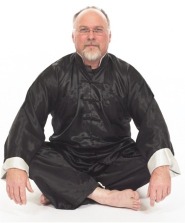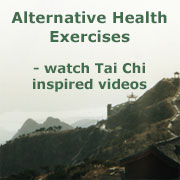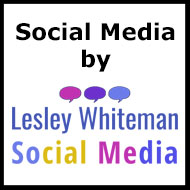We have had some useful discussion in classes recently, with a lot of people expressing their interest in more senior training. I am therefore pleased to let you know that I will be extending the Hitchin class on Fridays to 2 ½ hours from May 27 in order to accommodate this.
At the same time I will slightly restructure the evening class formats as follows:
Friday at Hitchin Baptist Hall – 7.00 to 8.30 beginners @ £7 – with seniors 7.00 to 9.30 @ £10
Sunday at Shefford Community Hall – 6.30 to 8.00 beginners @ £7 – with seniors 6.30 to 9.00 @ £10
Wednesday at Luton Chaul End Community Hall – 8.00 to 9.00 @ £7 mixed class.
This will allow beginners to focus on the initial learning stages while seniors can practice in greater depth to their own capability alongside – then at the Friday and Sunday classes seniors can stay for a further hour of advanced training.
Those looking to further their interest would be welcome to come to any of the seminars scheduled this year or to arrange a private session.”
One of my students has a long standing lower back condition which flared up recently to the point that his doctor thought he had slipped a disc – after a couple of weeks rest he came with a few others of the group to my teacher Karel Koskuba for a 3 hour seminar. Before we got started a couple of other students mentioned their own back problems – so we spent at least the first hour working on a very slow exercise for the back.
The other day I asked how his back problem was doing and this was the reply:
“The back is doing very well thank you.
The Karel visit really did the trick, and motivated me to get back to my training, because I was very nervous about putting any strain on my back.
The chat we had with Karel on standing triggered some thinking, as did the small slow movement over time.
As a result I was standing on Tuesday morning, and about 15 minutes in I noticed a small horizontal muscle group in my lower back was tense, I relaxed it, no idea how, and immediately the hips dropped forward. The back straitened, sciatica disappeared completely, and the tension in my right knee went.
I did 30 minutes standing and felt I could have carried on for another 30 minutes – totally relaxed.
What I’ve noticed now is that my chest is tense, not relaxed and not connected to the rest of me and feels like it’s limiting my breathing – something else to work on next.
– I haven’t had many breakthroughs as big as this and it was a bit of a shocker at the time 🙂 “
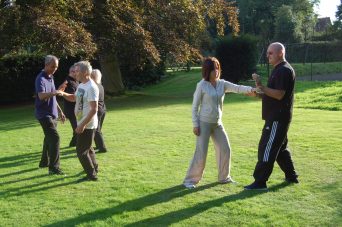
A Tai Chi residential seminar weekend from Friday afternoon through to Sunday afternoon – an opportunity to learn, explore and develop your Tai Chi in a quiet relaxed atmosphere.
Classes in Chen Laojia form, Broadsword form, Chi Kung, Tai Chi exercises – silk reeling, Partner work and Push Hands. Open to existing students plus anyone with previous experience of Tai Chi. Class restricted to 12 people.
Venue: Belsey Bridge, Ditchingham, Bungay, Suffolk, NR35 2DZ
Cost: £290 (en-suite)
Payment at time of booking.
Late booking fee of £30 after 1st August
Includes tuition with full board
To book call Ian Deavin on 01462 621970
I am not going to attempt a full review of The Global Minotaur – only to say that for anybody interested in the present world situation – economic, political, social – this is a “must read” – Yanis Varoufakis ( ex finance minister of Greece ) explains simply and clearly how we got where we are and where it is likely to go. This is obviously not overtly a Tai Chi book but should be of interest to anybody seeking to understand the truth of their situation and that of the world we humans inhabit – maybe as close as we get to an exposition of “reality” in world affairs. Well worth the purchase price and very relevant to the current EU in/out debate.
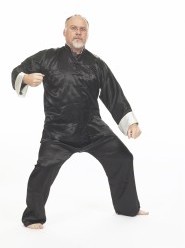
An early piece – written when I was transitioning from Karate to Tai Chi and so perhaps useful also to readers in a similar situation.
Over some years now it has been important to me to gain an understanding of the principles underlying body usage in martial arts – the following is a collection of models that have come from that study – some interpreted from descriptions given to me by teachers and others coming from my own observations – nonetheless they are all simply attempts to describe what I have experienced of an age old practice, in ways that can aid training. They are not new principles – simply descriptions of old ones. Consequently it should be remembered that these models are not exclusive but each can be considered to represent a different facet of the same real body operation in order to illustrate the concepts involved.
These are particularly western models in the main and are predominantly mechanical in nature – a style that the western mind seems to be more comfortable with in comparison to the Chinese models that are available.
Read the full article Here
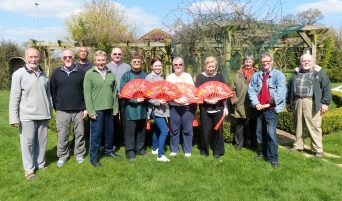
Our group from Shefford, Luton, Hitchin and Letchworth had a lovely trip to Swallowfield yesterday where Karel and Eva of the Chinese Internal Arts Association looked after us brilliantly with a full 3 hour seminar of exercises, questions/answers and explanations. Beginners and more experienced students alike found it informative and motivating with “much food for thought” – especially perhaps the concept of taking an hour over just one exercise! – during the course of which at least one “student back” gradually eased and returned to life from recent problems.
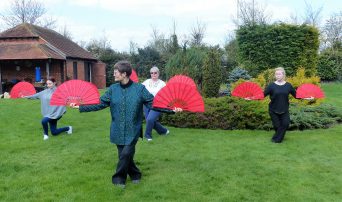 It also provided our “Double Fan Formers” with the chance for some revision – and gave the rest of us the chance to appreciate the results of their work in a demonstration at the end of the session.
It also provided our “Double Fan Formers” with the chance for some revision – and gave the rest of us the chance to appreciate the results of their work in a demonstration at the end of the session.
So with practice out of the way the group enjoyed a picnic style lunch in the afternoon sunshine – a delightful day – thank you to Eva and Karel – also to all attendees who helped to make it “go” with their enthusiasm and hard work.
I am half way through this book – The Path by Professor Michael Puett and Christine Gross-Loh – but could not wait to finish it before sharing my enthusiasm.
It really is excellent – it pulls together so many threads of ancient Chinese philosophy into one easy to read package in a way that makes it relevant to everyday life.
If you are already aware of some of the threads it will be a delight to revisit them and to discover the new ones all given added depth and meaning to western society by the authors clear approach – if this area is all new to you then it is a beautiful entry level piece with lots of places to expand your interest.
A brilliant companion to Tai Chi practice 🙂
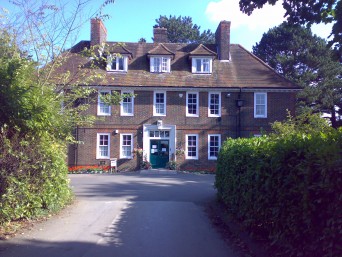
This is an extension of the Letchworth Centre Monday Tai Chi exercise class, with emphasis on learning how to look after yourself especially in terms of health and falls prevention.
Venue: The Letchworth Centre for Healthy Living, Rosehill Hospital, Hitchin Rd, Letchworth Garden City, SG6 3NA, 25th May 2016, 2-4pm
Cost: £15 in advance, £18 on the day
This seminar is an extension of The Letchworth Centre for Healthy Living Monday Tai Chi for falls prevention community class
To book telephone 01462 678804. You can also book online
Please wear suitable loose clothing and flat soled trainers or similar

I was thinking that people often present very differently to the way they are inside – some present as relaxed and confident but look at their bitten nails (no don’t look at mine!), many say good things about being honest but when it comes to it costing them then they let you down and it is only when you give them a chance to let you down that they show themselves. Others can appear weak and simple but turn out to have great inner strength and honesty – there is a Tai Chi expression about ” investing in loss ” which is primarily about letting yourself be vulnerable in order to find out your own weaknesses but it works the other way as well – if you show some vulnerability then it encourages the other person to let their guard down and reveal more of themselves.
I believe that most of this comes down to how people deal with their inner fear – everybody runs away at times, the real question is how do they do it – honestly or by blaming others?
We all have expectations about this – that if someone has one trait then they surely have another, but that so often trips us up and they turn out to be other than we expect.
Another martial arts metaphor likens a person’s development to the forging of a Japanese sword – we go through high energy times (high pressure or real fun stuff) – fire and low energy times (depression or relaxing) – cooling, and good steel gets stronger, more flexible and resilient the more it is worked until it is finished. Of course it needs polishing and looking after but at the end of the process a good person/sword is beautifully vibrant and balanced, able to deal with almost anything. We all have our limits of course but the trick is to recognise a good sword.
Interestingly I had the opportunity some time ago to handle some genuine Japanese swords at a museum collection where the curator was an enthusiast. Most felt like cold lumps of steel but one – made in 1360 – had a life of its own – it just felt like it wanted to move on its own. It looked nothing special, simple design, not highly polished, not very large, with some spots of rust and obviously well used, but once I held it I was in no doubt it was the real thing – then the curator told me its age – from a time when swords were made to be used and Samurai trusted a sword with their life, as opposed to later periods when they were often for show. In fact the Japanese master sword makers often did not sign their work saying that if a swordsman could not recognise a good sword without a label then they didn’t deserve it.
And a good teacher is like a good sword maker – pushing the steel to be the best it can be.

I am delighted to be running a seminar to celebrate World Tai Chi & Chi Kung Day – joining with practitioners around the World to share the energy of a day’s practice together.
Venue: Shefford Community Hall, 60 High Street, Shefford Bedfordshire, SG17 5AX
30th April 2016, 9.30am-12.30pm
Cost: £30 per seminar for bookings up to 1 week before the seminar. £40 after
To book telephone 01462 621970 or email: [email protected]




 It also provided our “Double Fan Formers” with the chance for some revision – and gave the rest of us the chance to appreciate the results of their work in a demonstration at the end of the session.
It also provided our “Double Fan Formers” with the chance for some revision – and gave the rest of us the chance to appreciate the results of their work in a demonstration at the end of the session.


